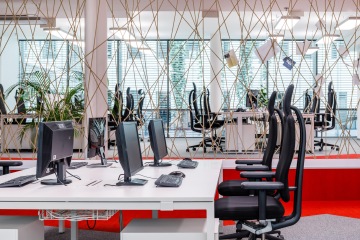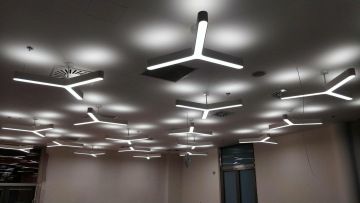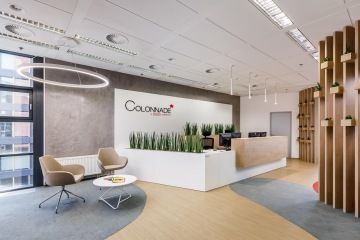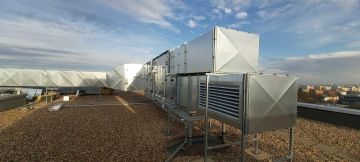When and why is it a good idea to move to new offices?

Moving offices is a logistics- and investment-intensive process. In the long run, however, moving to new offices can lead to positive changes in employee satisfaction and the company's financial stability. Before moving, many factors need to be considered that will affect the success of the move to a new office. Let us therefore take a closer look at some generally applicable advice and experience
of real employees who have moved to new premises.
Impact on employees
Last year, the B2B portal Clutch.com conducted a survey of permanent employees of several dozen companies that have changed headquarters in the last 10 years. A total of 503 employees were interviewed and the results show, among other things, that:
- Moving had a positive impact on productivity and satisfaction with the work environment for 68% of employees.
- Employees see increased comfort (68% of respondents) as the main advantage of moving offices. More space (61%), a more attractive environment (50%) and a better location (48%) also play important roles.
- Although relocation is seen as a long-term positive, for 67% of employees the relocation itself was associated with a short-term decline in productivity and increased stress.
- For people with a negative experience, longer commutes (30%) and worse locations (18%) had the greatest weight.

The voice
of employees
Employees should therefore have a voice in choosing the location of the new offices, the timing of relocations (although there is no ideal time) and in furnishing and modifying the interior. Moving a company headquarters does not actually save money if the cost of having lower rent is reduced productivity and employee satisfaction. It is therefore necessary to conduct a survey among employees before moving and designing new offices, which will reveal realistic demands for possible improvements.

Priority is communication
Regular and sufficiently extensive communication about future/potential relocation is also a necessity. Use all the main communication channels available to you (internal information system, company e-mail, joint meetings, etc.) to inform employees about all planned changes and the development of preparations for new offices. It is not always possible to tour the new premises before completion, but employees will certainly appreciate seeing photographs.
Due to the coronavirus pandemic, companies are looking for offices with a smaller floor area. Does this mean it is necessary to sacrifice a highly valued advantage for employees, i.e. more space? Not at all. The real floor area is not directly proportional to the subjective feeling of the working environment. If you implement acoustic elements correctly, you will visually divide and at the same time illuminate the interior, so employees can in fact gain more personal space even in a smaller office.
Pros and cons
So how do you decide if the benefits of moving outweigh the disadvantages?
Focus on the following factors:

1. Costs
It is necessary to consider all the costs and compare your current offices with the potential relocation premises. What is the situation as far as rent, energy prices or services are concerned? Moving is a good time to carry out a comprehensive audit of the company's expenses and find more effective ways to cut costs.

2. Accessibility for employees
Long commutes and poor public transport can make even great spaces a bad choice. Be aware that this factor might be
a dealbreaker for many employees and that the move could
cost you a lot of experienced people in the company.

3. Location
In addition to accessibility, the surroundings are also important when choosing new premises. Do employees have the opportunity to spend their break in a pleasant environment? Are there sufficient civic amenities near the new offices?

4. Corporate identity
The interior design of new offices should reflect the company's identity as much as possible. This is achieved through logos, corporate colours, decorations and creative space solutions.
The resulting effect will support the corporate culture and will have a better impression on clients and visitors.

5. Technology
Today, offices can no longer get by without access to
high-quality modern technologies. Make sure you don't lose
the technology benefits by changing offices and think about how to incorporate technological advances into your new workplace.

6. Innovative approaches to work
Smaller offices can work very well in hybrid mode.
The introduction of a flexible concept, work from anywhere
and other ways to combine work from home and the office
are always advantageous, whether there is a pandemic or not. They give employees the freedom to choose where they work best.
Effective moving strategies
Moving is a team endeavour like any other and it is necessary to approach it as such. If the whole process is to take place as efficiently
as possible and without unnecessary pitfalls, then a strategy must be prepared in advance, which should include:
- Responsible persons who have the task of organizing the move, checking and staying informed about it.
- The most accurate possible schedule, available to everyone directly affected.
- The resulting goals and steps to achieve them, which can be objectively declared completed and removed from the checklist. This will avoid chaos and ambiguity in terms of the schedule (once X and Y are done, we will start with Z and only move after finishing Z).
- Answers to key questions for employees (availability, characteristics of the location, benefits of the new offices, location).
- A communication plan, which will include not only internal communication, but also informing clients and sharing on the company's social media.

Summarized
and underlined
A well-prepared strategy will save you time and can be adjusted on the fly if problems arise during the moving process or if changes occur.
We will be happy to help you with the issues of moving to new offices. We will offer you a meeting with our move managers from the workplace consultancy department.
Published September 30, 2020